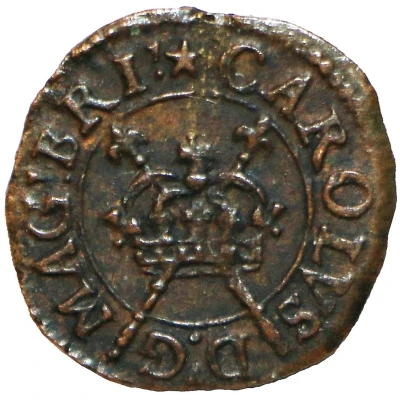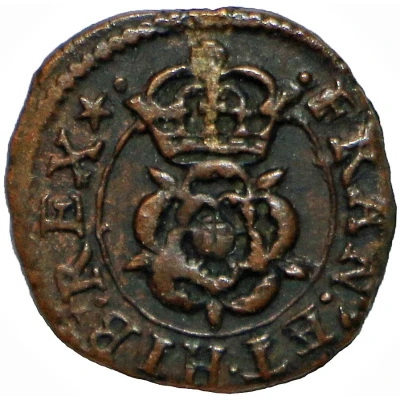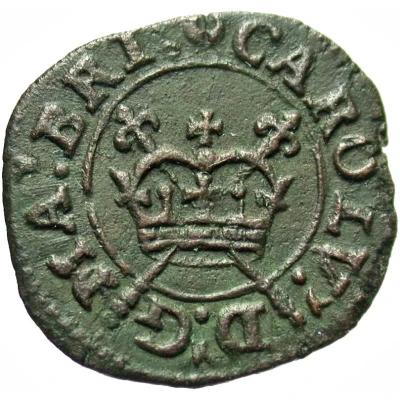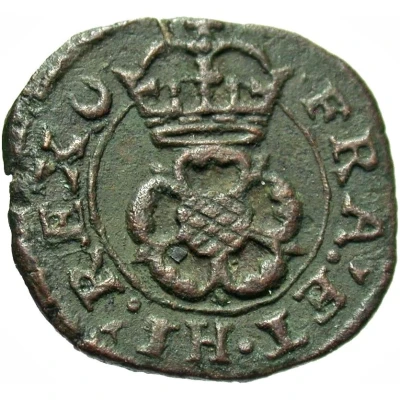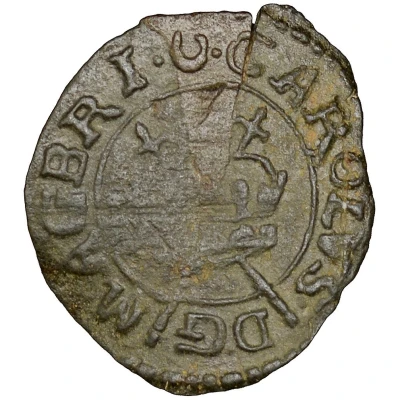
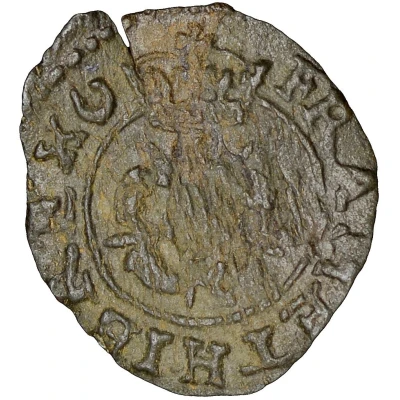

© Dix Noonan Webb
1 Farthing - Charles I Rose issue; type 4a ND
| Copper (with brass wedge) | 0.59 g | - |
| Issuer | England (United Kingdom, British Overseas Territories and Crown Dependencies) |
|---|---|
| King | Charles I (1625-1649) |
| Type | Token |
| Years | 1636-1643 |
| Value | 1 Farthing (1⁄960) |
| Currency | Pound sterling (1158-1970) |
| Composition | Copper (with brass wedge) |
| Weight | 0.59 g |
| Shape | Round (irregular) |
| Technique | Hammered |
| Demonetized | Yes |
| Updated | 2024-10-08 |
| Numista | N#313034 |
|---|---|
| Rarity index | 89% |
Reverse
Crowned Tudor rose, one layer of petals, mintmark at 11 o'clock, remainder of royal title around.
Note: single arched crown, long legend
Script: Latin
Lettering: FRAN ET HIB REX
Unabridged legend: Franciae Et Hiberniae Rex
Translation: France and Ireland
Comment
House of Stuart (1603-49), Charles I (1625-49), Rose farthing, type 4a (1636-43).In 1636, directions were given to Lord Maltravers and Sir Francis Crane “to make a new sort of farthing token which should have a little brass in the middle of the copper to distinguish the true farthings from forgeries.” The harp on the reverse was replaced by a rose, hence these pieces are known as the Rose farthings, and are the last made under the patent of Charles I, which was abolished during the interregnum.
Interesting fact
One interesting fact about the Token 1 Farthing - Charles I (Rose issue; type 4a) ND (1636-1643) from England is that it was made with a unique combination of copper and brass. The coin features a brass wedge, which was used to prevent counterfeiting, as it was difficult to replicate the exact alloy of copper and brass used by the Royal Mint. This feature makes the coin particularly interesting to collectors and historians, as it showcases the innovative techniques used by the Royal Mint during this time period.
